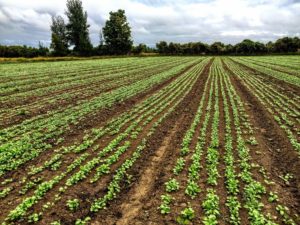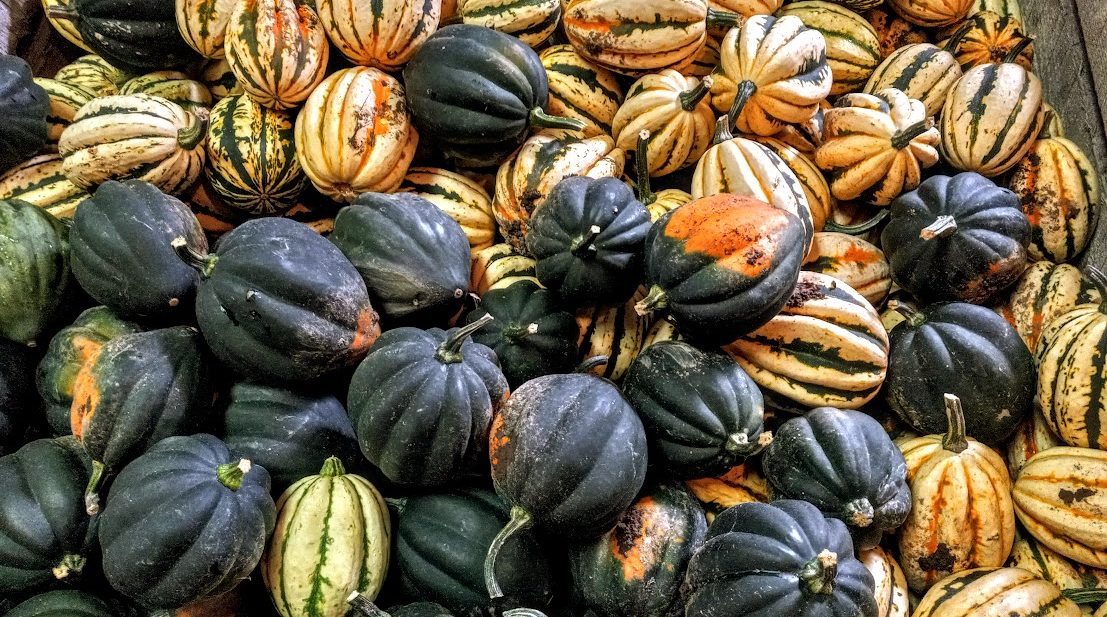It feels like we are heading more quickly into fall now on the farm and lots of autumnal things are beginning to happen. Our first winter squashes were harvested for storage from the field and our barn is now full to the brim of onions curing down for winter and fall use. Our fall and winter garlic is packed into bags and potato plants are dying back in the field and will likely be brought in at the end of the month.
The first squashes we harvested last week are varieties that we will use in fall and early winter shares – acorn and delicata types. They do need curing and were packed straight into big wooden bins and put into our shed for easy access for fall shares.
After these, we will work on harvesting the storage squash – kabochas and butternut and some more delicata as well. These will be set out to cure in our greenhouse where sitting in the sun for a week or so will harden their skin in preparation for long term storage.
The crew is also working on the much anticipated task of moving our onion storage room from the barn where it has been inconveniently located for several years and relocating it to the shed where all of our vegetable prep happens and where our other veggie storage rooms are located. It’s going to be really nice to have all the veg together come winter when we are packing heavy boxes and moving them into the van.
The team has also been working on seeding and planting late fall crops in greenhouse trays and in the field for fall and winter harvest. At this point, all remaining seeding and planting that we will do is for indoor production in our winter hoophouses. Lettuces and greens, spinach and kale are all seeded late in the summer and right into mid-fall to grow for harvest from November and straight through winter. There are all kinds of yummy greens that can take plenty of cold and frost and continue growing to provide continual harvest right through the cold months. We pack our hoophouses full in order to get something green to go each week in winter shares.
We have four hoophouses that grow crops in all seasons of the year. Three of these are moveable 90 foot structures built onto steel runners that can be pulled forward and backwards with a tractor. This allows us to plant greens outside of the hoophouses while summer crops are still growing inside and then to move the houses over the outdoor plots when the summer crops are finished. So, for example, we’ll continue harvesting tomatoes as long as possible and hopefully into October. We plant kale and spinach and lettuces outside of the hoophouse in late September and early October and then pull the tomato hoophouse off the tomato plants and onto the greens in late October when the tomatoes are finished.
The cover crop that Connor seeded a couple of weeks ago is now up in many of the field sections. On the right you can see the lush greens of tillage radish covering next year’s garden beds. Those greens will continue to grow, completely covering the soil surface, smothering weeds and protecting from erosion. Below the surface, long white radish will expand, aerating the soil below, breaking up compaction and helping to creating a lush tilth where microbes and insects can flourish, roots can push downward and our next year’s garden can take root.
